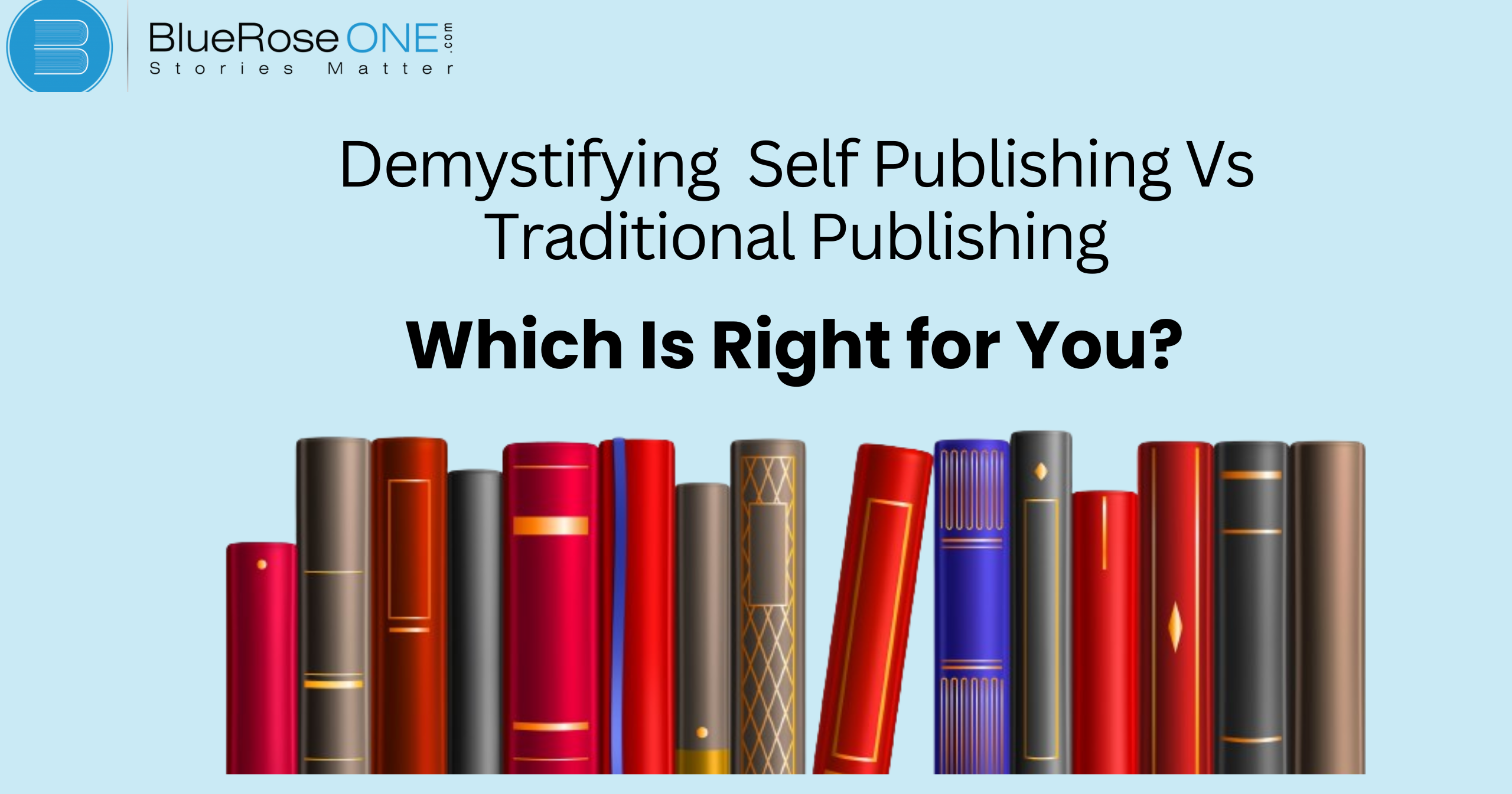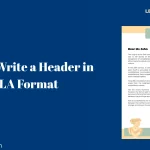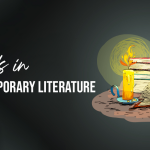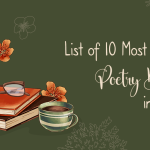Self publishing and traditional publishing are two different ways that writers can get their writing in front of readers. Aspiring writers must weigh the pros and cons of each choice carefully before choosing one because they present different obstacles and opportunities.
We’ll examine the nuances of traditional publishing as well as self-publishing in this post, offering guidance to help you decide which path is most appropriate for your requirements and objectives.li
Pros and Cons of Self-Publishing
Flexibility and Control
Examining the benefits and drawbacks of self-publishing requires careful consideration of the fine line that separates control from flexibility. Unmatched independence is provided by self-publishing, which gives writers complete control over everything from the cover art to the content of their works.
Compared to the traditional publication method, where authors frequently cede creative control to publishing houses, this level of autonomy is a significant change. But this independence has its own set of drawbacks, such as having to handle marketing and distribution duties.
Traditional publishing, on the other hand, comes with an existing network of industry contacts and a bigger readership, but at the cost of some creative freedom for authors.
Marketing and Distribution Challenges
The difficulties with distribution and marketing come up as important considerations when weighing the benefits and drawbacks of self-publishing vs traditional publishing.
In the world of traditional publishing, publishing companies’ well-established networks of distribution and marketing resources are frequently advantageous to authors. However, there can be restrictions on royalties and creative autonomy as a result.
However, self-publishing requires a hands-on approach to marketing and distribution but allows authors greater liberty and income. Whether choosing the entrepreneurial flexibility of self-publishing or the structured support of traditional publishing, navigating these obstacles demands careful evaluation of one’s aims and resources.
Royalties and Earnings Potential
Aspiring writers are always debating between self-publishing and traditional publication when it comes to publishing. One of the main benefits of self-publishing is the possibility of earning larger royalties.
Compared to traditional publishing, authors keep more control over their work and receive a higher percentage of each sale. But this independence has its own set of difficulties. Authors who choose to self-publish have more creative flexibility and a faster time to market, but they also have to handle the marketing, distribution, and editing duties.
On the other hand, conventional publishing could provide more exposure and expert assistance, but frequently at the price of reduced royalties and less creative control. Therefore, it is crucial for writers to comprehend the subtleties of both approaches.
You may also like: The Digital Frontier – How Technology is Reshaping the Literary World

Pros and Cons of Traditional Publishing
One important factor to take into account when comparing the benefits and drawbacks of self-publishing vs traditional publishing is having access to expert services. An extensive support network, encompassing editing, design, distribution, and marketing, is provided to authors by traditional publishing.
Authors can access a network of seasoned specialists who polish and expand the impact of their work by working with renowned publishing houses. But going this method frequently means giving up creative freedom and putting up with a drawn-out procedure.
On the other hand, self-publishing gives writers more independence but necessitates a more active approach to finding and managing these services. Although self-publishing provides unmatched independence, it also comes with more responsibility than traditional publishing. The decision ultimately comes down to personal interests and objectives.
Loss of Creative Control
The decision an author makes about publishing, whether to self-publish or go through traditional channels, can have a significant effect on their creative control. The benefits of professional experience and larger distribution networks are attractive about traditional publishing, but they are sometimes accompanied by a significant loss of creative control.
Authors may encounter editorial modifications, cover art, and even promotional tactics that are at odds with their original intention. However, authors who self-publish have total control over every aspect of their work, including design, marketing, and content.
But in order to handle the difficulties of self-publishing, authors must also devote more time and resources to this independence. The choice between self-publishing and traditional publishing ultimately comes down to weighing the benefits and drawbacks of each: the backing and prestige of established publishing channels against the independence and accountability of self-publishing.
Longer Publishing Timeline
Within the realm of publishing, authors have two unique options for distributing their works to a global audience: traditional publishing and self-publishing. The frequently lengthy publishing timetable is one factor to take into account when weighing the benefits and drawbacks of traditional publishing.
It can take longer for a work to be accepted for publication in traditional publishing because of the rigorous agent representation, editorial review, and manuscript submission processes. This schedule may be taxing on the author’s patience, but it frequently guarantees excellent production values and broader distribution channels—features that are closely associated with traditional publishing.
On the other hand, authors who self-publish may forfeit the recognition and promotional assistance that come with going through traditional channels, but they will have more control and quicker turnaround times. The choice between self-publishing and traditional publication ultimately comes down to personal preferences and objectives.
You may also like: Book Writer | 10 Must-Read Tips for Aspiring Book Writers

Factors to Consider Before Choosing
A number of things should be taken into account when comparing the benefits and drawbacks of self-publishing vs traditional publication. Professional editing, marketing assistance, and larger distribution networks are alluring features of traditional publishing that can increase the visibility of your work. But getting a traditional publication usually takes a long time, involving contacting agencies and sometimes facing rejection.
Conversely, self-publishing gives writers more control over their work and a quicker time to market. However, it necessitates a large time and resource commitment for things like marketing, cover design, and editing. Ultimately, before deciding between self-publishing and traditional publication, authors need to assess their objectives, deadlines, and available resources.
Self-Publishing Success Stories
Despite its difficulties, self-publishing has given rise to many success stories. Rupy Kaur, Amish Tripathi, Rashmi Trivedi, Shubham Shukla for example, achieved bestseller status and significant financial success through independent publishing.
Traditional Publishing Success Stories
Similarly, traditional publishing has its share of success stories, with authors like E. L. James, Janette Rallison, Savi Sharma became household names through the support of established publishing houses.
Myths and Misconceptions
Myths and false beliefs abound when it comes to navigating the publishing industry, particularly when it comes to the decision between self-publishing and traditional publishing.
One prevalent misconception is that self-publishing is only an author’s last option and that traditional publication ensures legitimacy and success. But the truth is much more complex. Although traditional publishing has longer submission deadlines and lesser royalties, it does provide the backing of a publishing house.
Conversely, self-publishing gives writers greater flexibility and pays them more, but it also necessitates a lot of self-promotion. Determining which path best fits your aims and vision as an author requires you to weigh the advantages and disadvantages of each option.
Tips for Success in Self-Publishing
As regards publishing, self-publishing as well as traditional publishing channels present special chances for prospective writers. Authors can retain creative control and earn larger royalties through self-publishing, as opposed to traditional publishing, which requires signing a contract with a publishing house.
It is essential to comprehend the subtleties of each procedure in order to succeed in either. To make your manuscript stand out for traditional publishing, look for agents and polish it. In contrast, to create a finished product while self-publishing, spend money on expert editing and design.
In the end, mastering your skill and enjoying the trip will lead to success whether you choose the conventional path or self-publish.
You may also like: Marketing Strategies for Today’s Self-Published Authors
Tips for Success in Traditional Publishing
It is essential to comprehend the differences between self-publishing and traditional publishing when negotiating the complex world of publishing. Finding an agency can be a critical first step in the traditional publication process, providing access to respectable publishing houses.
Your chances of success in this field are significantly increased by researching each agent’s preferences and creating a convincing query letter specifically for them. On the other hand, self-publishing requires careful attention to editing, cover design, and marketing, but it also offers independence and faster turnaround times.
Regardless of the route you take, persistence, patience, and an openness to change are essential qualities for success in the ever-changing publishing industry.
Choosing the Right Path for You
The choice between traditional publishing and self-publishing ultimately comes down to your personal objectives, tastes, and financial situation. You can select the course that most closely matches your vision for your book by carefully analyzing the advantages and disadvantages of each choice and taking into account your long-term goals as an author.
Conclusion
In conclusion, both traditional publishing and self-publishing are respectable avenues for getting your book into print, each with their own benefits and drawbacks. You can make an informed choice that puts you on the road to publishing success by being aware of the distinctions between the two and taking into account elements like creative control, financial investment, and marketing strategy.
Frequently Asked Questions
While self-publishing may have lower upfront costs, traditional publishing often covers editing, design, and distribution expenses, making the overall cost comparable.
While some self-published books achieve significant success, the vast majority struggle to gain traction without the marketing support of a traditional publisher.
The timeline for traditional publishing can vary widely but typically takes between one to two years from manuscript submission to book release.
Yes, many authors have successfully transitioned between self-publishing and traditional publishing depending on their goals and circumstances.
The publishing landscape is evolving rapidly, but traditionally published authors still represent the majority, although self-publishing is becoming increasingly popular.
















